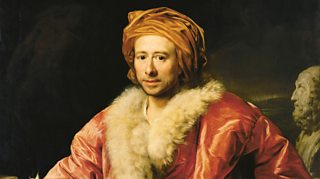Actors
Michael Goldfarb looks at why Marlon Brando and Stanley Kowalski turned to wearing T-shirts as a sign of their unwillingness to conform to society's norms in postwar America.
In 1945, when World War II finally ended and while Europe's artistic centres smouldered, in New York City an artistic renaissance, in music, painting, theatre, and literature, burst forth out of the city鈥檚 bohemian.
Most of this work was generated in a single neighbourhood of Manhattan: Greenwich Village.
World War II in America was a time of national unity, a singleness of purpose where non-conformity had no place in military or civilian life. Yet somehow as soon as the war ended, a full-blown non-conformist bohemia exploded in New York. Membership of this Bohemia, for men at least, was signified by wearing an undergarment - the T-shirt - in public. Today that means nothing. In 1945, in a society that was still mobilised with military single-mindedness, it was shocking.
In this series for The Essay, Michael Goldfarb explores the how and why of this extraordinary eruption through the stories of some of T-shirt Bohemia's key figures: Marlon Brando, Jackson Pollock, James Baldwin, Charlie Parker and Jack Kerouac.
In this episode, he focuses on Marlon Brando and Stanley Kowalski whose T-shirts were designed by Lucinda Ballard, for the original production of A Streetcar Named Desire.
Last on
Broadcasts
- Mon 27 Jun 2022 22:4591热爆 Radio 3
- Mon 10 Jun 2024 21:4591热爆 Radio 3
Death in Trieste
Watch: My Deaf World
The Book that Changed Me
Five figures from the arts and science introduce books that changed their lives and work.
Podcast
-
![]()
The Essay
Essays from leading writers on arts, history, philosophy, science, religion and beyond.





